Achieving a reliable prime quickly and efficiently is paramount to the success of any rural water operation. This is usually accomplished using the onboard mechanical or pneumatic positive displacement priming pump.
These priming pumps, which are required by National Fire Protection Association (NFPA) 1901, Standard for Automotive Fire Apparatus, are very effective at establishing a prime from a static source. However, instances may occur where the primer pump fails to operate on a fire scene. These instances can create a very stressful situation for the unprepared pump operator.
“Burp drafting” is an alternative drafting technique that can be used in scenarios where the primer fails to operate. This method can also be used instead of the onboard priming system for a rapid establishment of a draft. We will discuss the operating principles behind this alternative drafting method, steps for performing this technique, and key operational considerations. This method will give the rural pump operator an “ace in the hole” during those challenging drafting scenarios (photo 1).
- Using Multiple Primers to Establish Your Static Water Supply
- Drafting Still a Necessary Element on Firegrounds for Many Departments
- Where’s the Water?
- Maximizing Pump Capacity While Drafting: The Twin Tube Setup
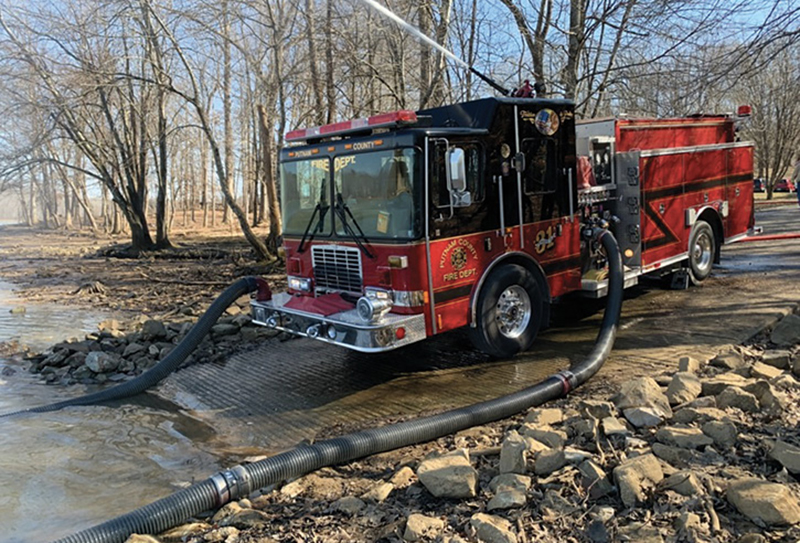
1 Burp drafting is a fast and effective way to prime side, front, and rear intakes. (Photos by author.)
“Burp Drafting” Operating Principles
The name “burp drafting” is used to describe the means in which this technique achieves a prime without the use of a primer. Using this technique, the pump operator is simply “burping” the air within the hard suction hose and intake plumbing out through a discharge outlet. For this technique to work, three critical components must be present and occur:
- There must be water in the booster tank.
- There must be an intake valve present on the intake being primed.
- Water must be circulated through the pump from the booster tank.
The major concept behind this process is the recirculation of water from the booster tank. The laws of physics state that we cannot create or destroy matter. This means that when water traveling through the tank-to-pump line is discharged from the pump through the tank fill line, something has to replace the water that was discharged. When the operator is recirculating water, more water from the booster tank comes to replace the water that was discharged from the pump. Since we know this process occurs every time the pump is engaged, the tank-to-pump valve is opened, and the tank fill valve is opened, we can conclude that an area of negative pressure is present at the eye of the pump’s impeller when water is being discharged.
If the impeller is spun faster while recirculating water, it will increase the amount of water being recirculated through the pump. This will naturally cause a larger area of negative pressure to be created at the eye of the impeller. Because of this, it is critically important for the operator to rapidly recirculate water while performing this technique. It is generally recommended to increase the pump discharge pressure to 150 pounds per sqwuare inch (psi) when preparing to burp draft.
Air and water are both considered fluids. Since fluids are attracted to areas of negative pressure, the process of burp drafting is able to occur. After the pump operator has begun to recirculate water and throttled up to 150 psi, the operator will slowly open the intake valve of the intake being primes. The operator should only open the intake valve until a drop in the master discharge gauge reading is noticed and then stop opening the intake valve. The drop in discharge pressure signifies air within the hard sleeve and intake plumbing has entered the pump and is being burped out through the tank fill line (photo 2).
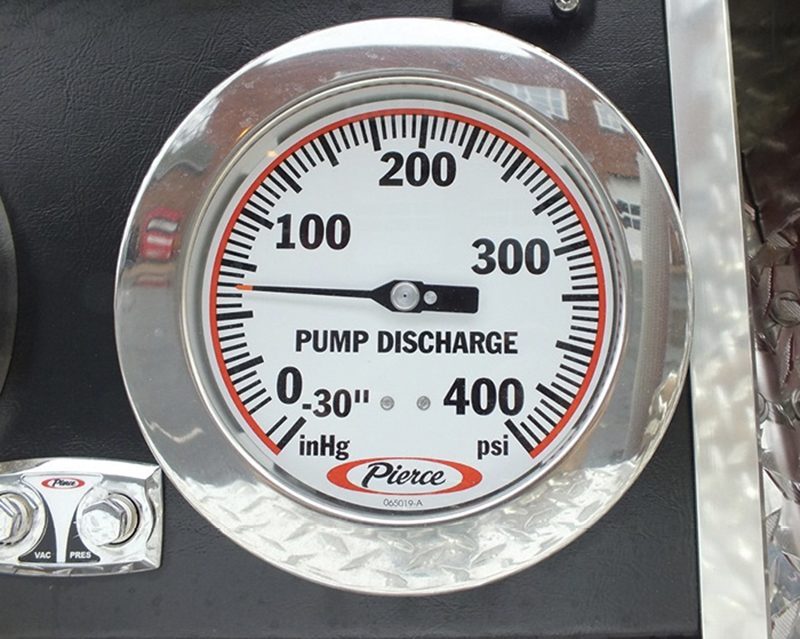
2 The operator should only open the intake valve until he sees a drop in the master discharge reading from 150 psi. This signifies air is being burped through the pump. If the master discharge gauge drops to 0 psi, the intake has been opened too quickly.
It is critically important that the operator only open the intake valve until the drop in discharge pressure is noted, then stop. If the operator opens the intake all the way or too quickly, too much air will be introduced into the pump and the process will stop. By opening the valve slowly and stopping when the pressure drops, the operator allows a small amount of air to enter the pump and be carried toward the discharge side of the pump by the recirculating booster tank water.
Once the master discharge gauge levels back out to 150 psi, the operator should open the intake valve a little more until they notice another drop in the discharge pressure. Depending on the intake being used, the amount of hard sleeve connected, and the lift being overcome, this rise and fall of the discharge pressure may happen several times. Each time the pressure drops, the operator should let the pump do the work and only continue to open the intake once the pressure levels out again.
Once the intake valve is all the way open, the operator should slowly close the tank-to-pump valve. This transitions the pump from receiving its water supply from the booster tank to solely the outside static source. The operator may notice another drop in the master discharge pressure when closing the tank-to-pump valve. This is because the last bit of air is being burped from the system. Once the intake valve is completely opened and the tank-to-pump valve is completely closed, the operator has successfully achieved prime.
If the operator initiated this process with a full tank of water, the booster tank will begin to overfill. The operator should immediately close the tank fill valve so as not to waste water or get the apparatus stuck (photo 3). Once the tank fill line is closed, the operator should open either the required discharges to supply the scene or an external recirculation line to keep the prime. If the operator initiated the burp drafting process with less than a full tank of water, the booster tank should be refilled before the tank fill valve is closed.
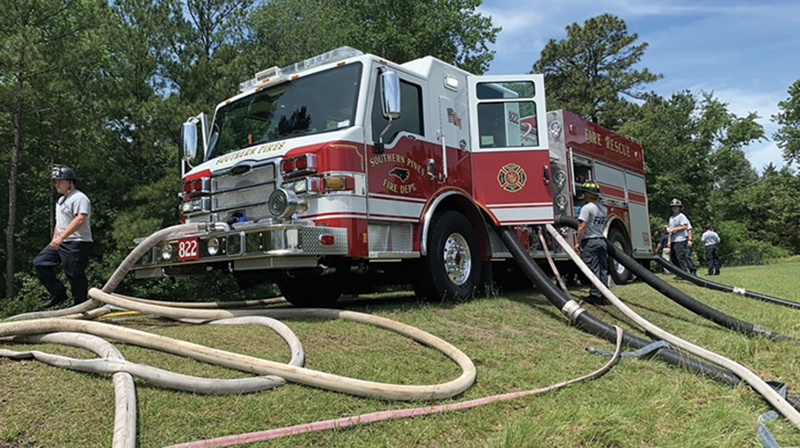
3 The operator must be mindful not to overfill the tank and let water dump on the ground. This not only wastes water but also runs the risk of getting the rig stuck.
Variations to the Burp Draft
Some firefighters have been taught this primer-less priming method while flowing water out of a handline. While it is possible to perform this technique while flowing a handline, the operator must be cautious of this option. If the pump operator attempts to perform the burp draft while flowing water through a handline, there must be an understanding that the process will only work when the nozzle is open. If the nozzle is shut while the operator attempts the burp, a prime will not be achieved and tank water will likely run backward out of the intake.
The operator must also be concerned with where the air is burped when performing this method and supplying a handline. If this technique is performed while the handline is flowing, the air will be burped out of the handline nozzle. This will cause an interruption of water flow and create erratic nozzle reactions for the person at the nozzle. The operator should instead elect to achieve prime using the pressurized priming method and not the burp draft, if he is tasked with supplying handlines and achieving prime (photo 4).

4 The pressurized priming method should be used if handlines are in operation and the attack engine must also establish a prime.
Another variation of this method involves using the apparatus-mounted deck gun or wagon pipe for the burp. The major concern while using the deck gun for this method is that it puts the operator on a very restrictive time limit. Flowing 500 gallons per minute (gpm) from the deck gun will only leave the operator between 30 and 60 seconds to achieve prime before running out of water; this, of course, depends on the apparatus tank size and water level in the tank when the burp is initiated. There is very little room for error when the deck gun is used for this method because if the operator runs out of water, the prime cannot be achieved using this technique (photo 5).
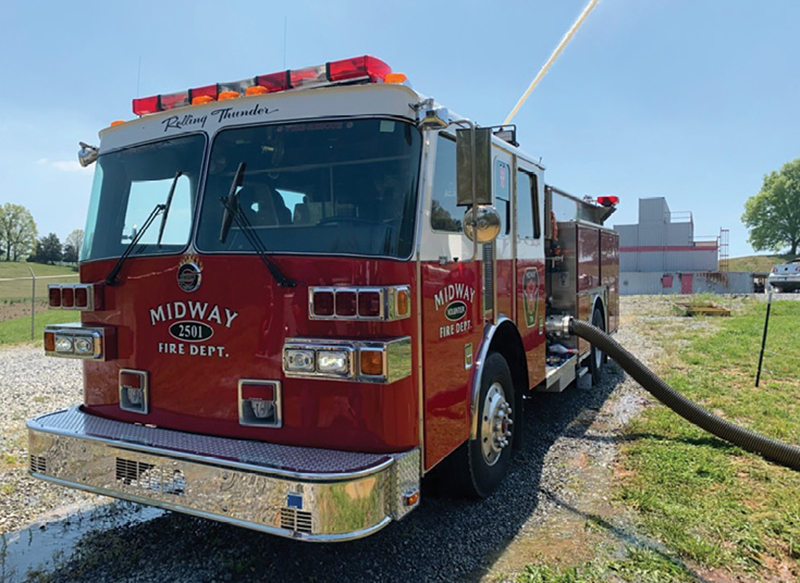
5 Burping using the deck gun as the discharge opening runs the risk of running out of water before the prime is established.
It is for these reasons that it is recommended that pump operators use the tank fill line as their discharge opening for the burp drafting method. This is primarily because the tank fill line is a self-contained discharge within the pump. The operator will literally run out of diesel fuel before running out of tank water when the tank fill line is used as the discharge opening for the burp draft.
Key Operational Considerations
The burp drafting method is a very fast and effective priming method that can be used in the rural environment. The operator must be mindful of the following key considerations before and while employing this priming method:
- Ensure water is in the booster tank. This process only works when there is water in the booster tank to be circulated. If the operator has an empty booster tank or runs out of water before attempting this method, the onboard primer pump will have to be used. When employing this method, the booster tank does not have to be completely full of water for this process to work. This method has successfully been used with as little as a quarter of a tank of water in the onboard tank. There just has to be enough water in the tank to support recirculation of the booster tank water.
- An intake valve MUST be present. The key to successfully employing this drafting method is the operator’s ability to regulate the amount of air that gets introduced into the pump. The only way the operator is able to do this is if the intake being primed is equipped with an intake valve. The intake valve can be either an internal or external style valve, as long as the operator has the ability to incrementally open it. Some rural departments are hesitant to put intake valves on the apparatus because certain style valves will reduce the amount of water that can be drafted compared to hooking the hard sleeve directly to the pump inlet. Although this is true in some cases, there are external valves available that will allow the operator to have full control of the water entering the pump and that provide a large 5¼-inch waterway with a minimal amount of hydraulic loss (photo 6). Intake valves afford the pump operator control, and a pump operator in control has a higher probability of success.
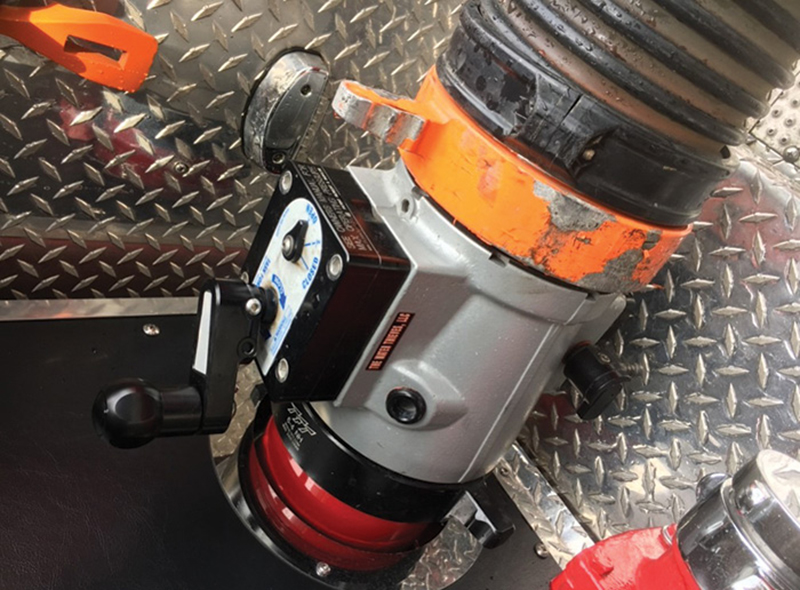
6 This Task Force Tips Jumbo Ball Intake Valve allows the operator to have control while burping the intake without sacrificing flow.
- Water must be circulated at a high rate of speed. Operators must remember that this process only works if the water is recirculated at a high rate of speed. This is why it is recommended to increase the pump discharge pressure to 150 psi while performing this technique. If the water is not recirculated fast enough, there will not be a sufficient area of negative pressure created at the eye of the impeller to cause the air and subsequent water to be drawn into the pump from the outside source.
- Know the size of your tank fill line. It is critically important for the pump operator to know the size of the tank fill line because it will directly affect how far the tank fill valve can be opened during this process. Generally speaking, if the rig is equipped with a 1½-inch tank fill line, the valve can be opened all the way. If the rig is equipped with a 2-inch or larger fill line, then opening the tank fill all the way and attempting to throttle up to 150 psi will likely cause the pump to cavitate just trying to recirculate water. When dealing with a rig that has a 2-inch fill line, simply gate it back so that the pump pressure can be increased to 150 psi and then perform the burp. If you are not sure about the size of your tank fill line, remember that NFPA 1901 requires that apparatus with booster tanks equal to or greater than 1,000 gallons be equipped with a 2-inch or larger fill line. If your apparatus has less than 1,000 gallons of water, there is a good chance that the fill line will be less than 2-inch.
- Be patient. The operator must only open the intake valve until a drop in the master discharge gauge is noticed and then stop opening the intake valve. If the operator continues to open the intake valve after there is a drop in pressure, too much air will be introduced into the pump and the process will cease. Once the pressure levels back out, continue to open until either another drop occurs or the valve is fully opened.
- Open fully before you close. One of the biggest mistakes that operators make when performing this method is that they attempt to gate back the tank to pump while slowly opening the intake. The major problem here is that in most instances, the operator reaches a point where the pump is starved for water on both sides—the external source side and the tank-to-pump side. The key to success here is to only close the tank-to-pump valve once the intake valve to the external source is fully opened.
ANDY SOCCODATO has served in the fire service for the past 15 years. He spent nine years of his career as a firefighter and driver/operator for the Charlottesville (VA) Fire Department. He is a full-time fire instructor II at the Tennessee State Fire Academy, where he oversees the driver/pump and aerial programs. Soccodato is the owner of The Water Thieves, LLC, which specializes in delivering street smart driver/pump operator courses. He is on the Editorial Advisory Board for Fire Apparatus & Emergency Equipment.

